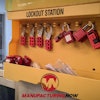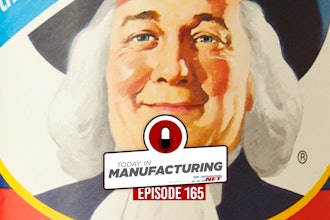Designers of products that incorporate fluid transfer face many challenges when it comes to connecting hoses and tubing efficiently and cost effectively. While all fluid transfer lines found on motorcycles, ink jet printers, medical devices, or portable hydration units require a connection device, the specifications for each can differ dramatically. There are various materials available and virtually unlimited options for size, termination type, and functionality. What is the best approach to determining the right solution for a specific project?
Points to ConsiderTo begin, it is important to understand the basics about connections and the types of options available. The most common methods of connecting tubing and hoses are couplings, fittings, or instant fittings, with or without valves. Each of these connector types is available with barbed, flared, or other termination types. While each is appropriate for certain types of applications, they are not necessarily interchangeable.
Unfortunately, the connection decision-making process is often initiated late in the development cycle and not enough time is spent making the best selection. A hasty decision can eventually affect the usability of the end product and even diminish product performance.
What about fittings and couplings should be considered before making a choice? The first question to ask at the start of the selection process is how often the fluid line will be disconnected during equipment use. Fittings are a popular choice for applications that do not require the disconnection of equipment or parts at any point during development or use. If the tubing does not need to be disconnected but the flow needs to be regulated, a separate valve, such as a ball valve, can be used.
If the assembly or use of the product would benefit from repeated connections and disconnections, a coupling should be considered. For example, equipment designed in modules is usually assembled at various times and locations. To shorten assembly times, couplings can be used to quickly attach the component parts or subassemblies. Engine assembly with fluid lines is a good example of this.
The next item to consider is the speed of the connection. If it is important that the equipment be assembled quickly, and if the fluid lines won’t need to be disconnected again, then a fitting or instant fitting would be a viable, low-cost solution. If the machinery needs to be assembled quickly, but includes fluid lines that will need to be disconnected for servicing or repair, then a coupling is a better choice.
Expertise, Convenience and Safety
Each servicing point on a machine will contribute to overall downtime. Easy-to-use couplings can expedite maintenance and service efforts by providing quick access for technicians. Additionally, couplings with integrated valves save time by eliminating spill clean-up and reducing the need to purge air from the fluid lines. Fittings can take a longer time to disengage and re-install, but may be the connection of choice if disconnections are not time sensitive.
Take into account user expertise and convenience. A well-trained technician or operator who regularly uses tools on the job can work capably with fittings, making repeated connections and cutting tubing easily and accurately. Untrained users such as people who use appliances — medical equipment, coffee machines, or gardening equipment — are likely to enjoy and better appreciate making quick disconnections with couplings.
Also, evaluate the safety requirements of the final product — this includes both user safety and equipment safety. Fluid handling of caustic chemicals or harmful gases can be tricky if fittings need to be accessed. Even for a fitting installed with a valve, tools are usually required to disconnect and then reconnect. This is quite risky for a user dealing with dangerous media — within the tubing or hose — that may spill if the valve and fitting are separated. However, shutoff valves that are designed into couplings can virtually eliminate leakage immediately upon disconnection.
In addition to variations in material, terminations, and size, fluid connections can also be designed with special features to enhance security and safety. Couplings offer “keying” capabilities in applications where it is critical that multiple fluid or gas lines are not cross-connected. Fittings and couplings are both available in colored options to assist in quickly identifying fluid lines.
While cost is ultimately a critical factor in connection decisions, investment evaluations should go beyond initial price and take into account system benefits and long-term return. Innovative suppliers can offer cost-effective coupling solutions that make operations simpler, safer, cleaner, and even smarter, as is the case with devices that offer RFID technology.
Fittings, on the other hand, are simpler in design and function. Therefore, initial cost is generally lower compared to couplings.
In Closing
After reviewing all the decision factors and pinpointing the right connection, work out detailed specifications, including size, material, and termination, before making a final selection. There are coupling, fitting, and valve solutions on the market to suit virtually any type of application.
If no existing product is available for a specific need, don’t hesitate to ask your supply partner for a customized solution. Working with an expert supplier will ensure the most appropriate connection is incorporated into the right application.






















